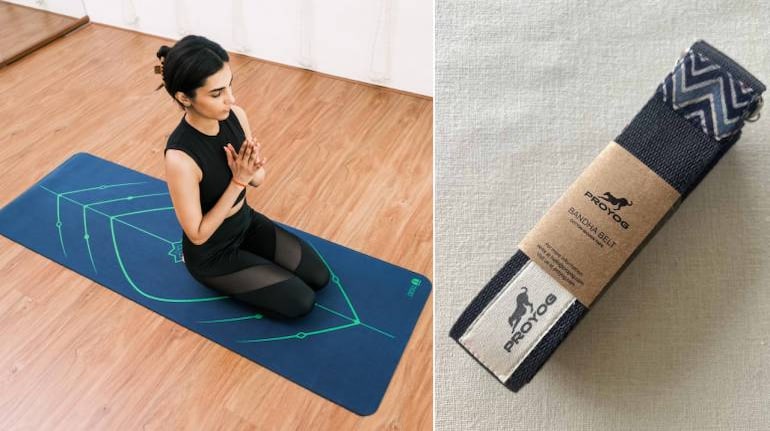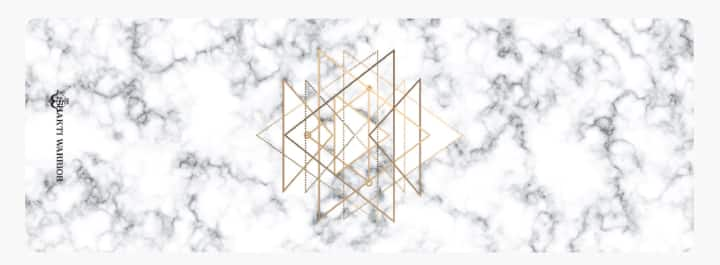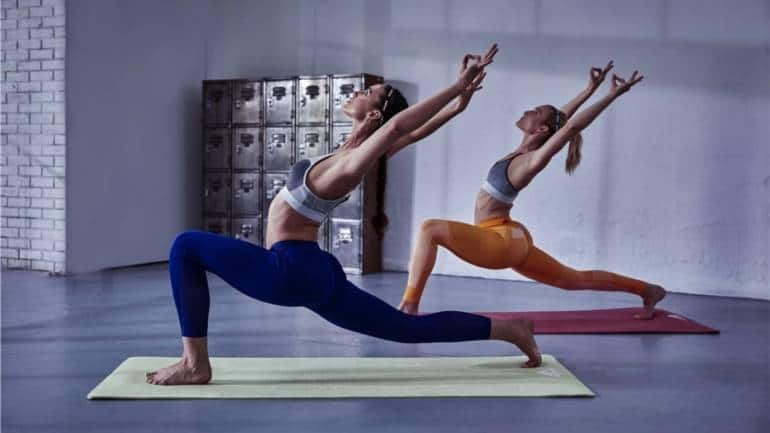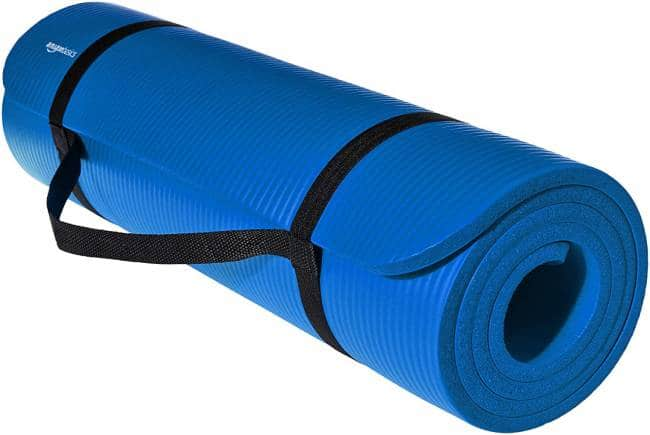



Did you know that the yoga mat we use for our daily practice did not evolve in India, the maturbhumi of yoga, but in Germany? There is a bit of controversy here. In the Western world, London-based yoga teacher Angela Farmer is credited with having invented the sticky mat we commonly use now. Frustrated by the way she and her students slipped while doing the asanas, Farmer was looking for alternatives, when, while travelling in Germany, she came across a sticky green mat used under furniture to stop it from slipping on wooden floors. She brought a length back home to London and tried her asanas on it. She found that it worked beautifully. Germany, eventually, was credited for manufacturing the first yoga mats.
But the Indian government sees it a bit differently. According to the government site dedicated to yoga and all things Indian wellness, it was our great Yogacharya BKS Iyengar who invented the first yoga mat. While teaching a few students in Germany, he found that his feet were slipping while doing the backward bending asanas because the centres in Europe had wooden flooring, unlike Cudappah stone floors in India. One day while travelling, he found a green rubber mat placed underneath carpets to prevent them from slipping. He bought a length and experimented with it, to find that he no longer slipped while doing complicated asanas. He termed these green rubber mats as ‘sticky mats’. Thus, India believes, was born the modern-day yoga mat. Before this, in India, yoga practitioners used a daari (rug) or chattai.
Also read: Rajiv Bajaj on how yoga helped him recover from a severe back injury
For a while, Germany remained the main manufacturer of the yoga mats. Now most countries, including India, manufacture sticky yoga mats. Today, it is a billion-dollar industry with brands such as Nike and Adidas manufacturing their version of the yoga mat.
Here's what you need to consider while choosing a yoga mat:
Material: Yogacharya Vinayak Ram of Haridwar’s Krishna Yog Ashram recommends TPE mats (Thermal Plastic Elastometers), which have excellent absorbency and durability. “The TPE mats, with their mix of rubber and foam, offer a good grip and cushioning and are biodegradable. The mats are lightweight and travel-friendly. The flexibility of the material makes folding these mats very easy.” Avoid PVC mats, he says, as they are not absorbent, can become slippery when wet, and are not environmentally friendly - PVC is not a biodegradable material.
For those looking at more eco-friendly options, Yogacharya Ram recommends mats made from natural rubber and cotton, which offer enough traction while doing yoga, and are sustainable but are not very gentle on your joints.
 Natural tree rubber yoga mat by Sacred Geometry.
Natural tree rubber yoga mat by Sacred Geometry.
Size: The standard size of the yoga mat is 6 X 2 feet. But if you have broad shoulders, then you need a wide mat of 7 feet X 2.5 feet.
Texture: A good idea is to try out the mats in a sports shop such as Decathalon before buying one. “Check it for the sponginess, or how well a mat responds to applied pressure,” says Devina Mehta, a yoga teacher at Mumbai’s School of Yoga and Meditation. “PVC mats are a popular choice for sponginess, while some firm options such as cork are good for carpeted surfaces. However, PVC is not a biodegradable material, so if sustainability matters to you, rubber or TPE mats may be your thing.”
Thickness: The thicker the cushioning, the better protected are your palms, knees and other contact areas. An 8mm to 10mm thick mat prevents friction with the floor and injuries, says Yogacharya Nandev Misra from the Bihar School of Yoga. For a beginner, who practices yoga three times a week, particularly a more gentle form such as Hatha Yoga, a 6mm to 8mm thick mat will suffice. But for a daily practitioner of more complex forms of yoga such as Ashtanga or vinyasa, a 10mm one is better for the joints. If you take your yoga mat along while travelling, invest in thin and light mats that are easy to carry, and can vary from 3mm to 5mm in thickness.
 The Nike Essential Yoga mat is 3mm thick, with textured foam for grip.
The Nike Essential Yoga mat is 3mm thick, with textured foam for grip.
Colours and patterns: If you are a daily yoga practitioner and bore easily, a more vibrant patterned mat with floral or geometric patterns may keep you motivated as you go down while doing a downward dog.
Yoga mat brands
• TEGO is a brand popular with those whose practice is intense. It is engineered from emerging materials and textile technologies such as Thermoplastic Elastomers that support foam cushioning. The 8mm thick Tego mat helps reduce the impact on joints while doing the asanas and offers great grip.
• Adidas’s 5mm thick Professional Yoga Mat or ProMat is a PVC-free, anti-slip mat made from ethylene-vinyl acetate.
 Adidas anti-slip yoga mat
Adidas anti-slip yoga mat
• The Nike Essential Yoga mat is 3mm thick, with textured foam for grip and soft touch during practice, and is best used as a travel option rather than regular, intense practice.
• Sacred Geometry makes non-slip natural tree rubber mats for grip. They are sweat absorbent, feature a microfiber suede surface made from recycled plastic bottles, offer a good grip, and are free from harmful materials such as latex, toxic glue, silicone and PVC.
• For those looking at eco-friendly options, Proyog’s 3mm thick extra grip yoga mat is crafted from natural jute and rubber, and is a good option if you are taking your mat along on your travels.
• Amazon Basics 13mm thick yoga mat is available in multiple colours and is great not just for yoga, but even Pilates and aerobics.
 Amazon Basics' 13mm thick mat for yoga, aerobics and Pilates.
Amazon Basics' 13mm thick mat for yoga, aerobics and Pilates.
• Kobo’s 15mm mat is often used by athletes and sports enthusiasts. It is good for stability, prevents injury and is anti-slip.
• BoldFit’s TPE mat has a double-layered structure that prevents any slips and offers optimal grip during a workout.
• Brandvilla’s yoga mats are made from ethylene-vinyl acetate for durability and slip-resistant surfaces.
Discover the latest Business News, Sensex, and Nifty updates. Obtain Personal Finance insights, tax queries, and expert opinions on Moneycontrol or download the Moneycontrol App to stay updated!
Find the best of Al News in one place, specially curated for you every weekend.
Stay on top of the latest tech trends and biggest startup news.